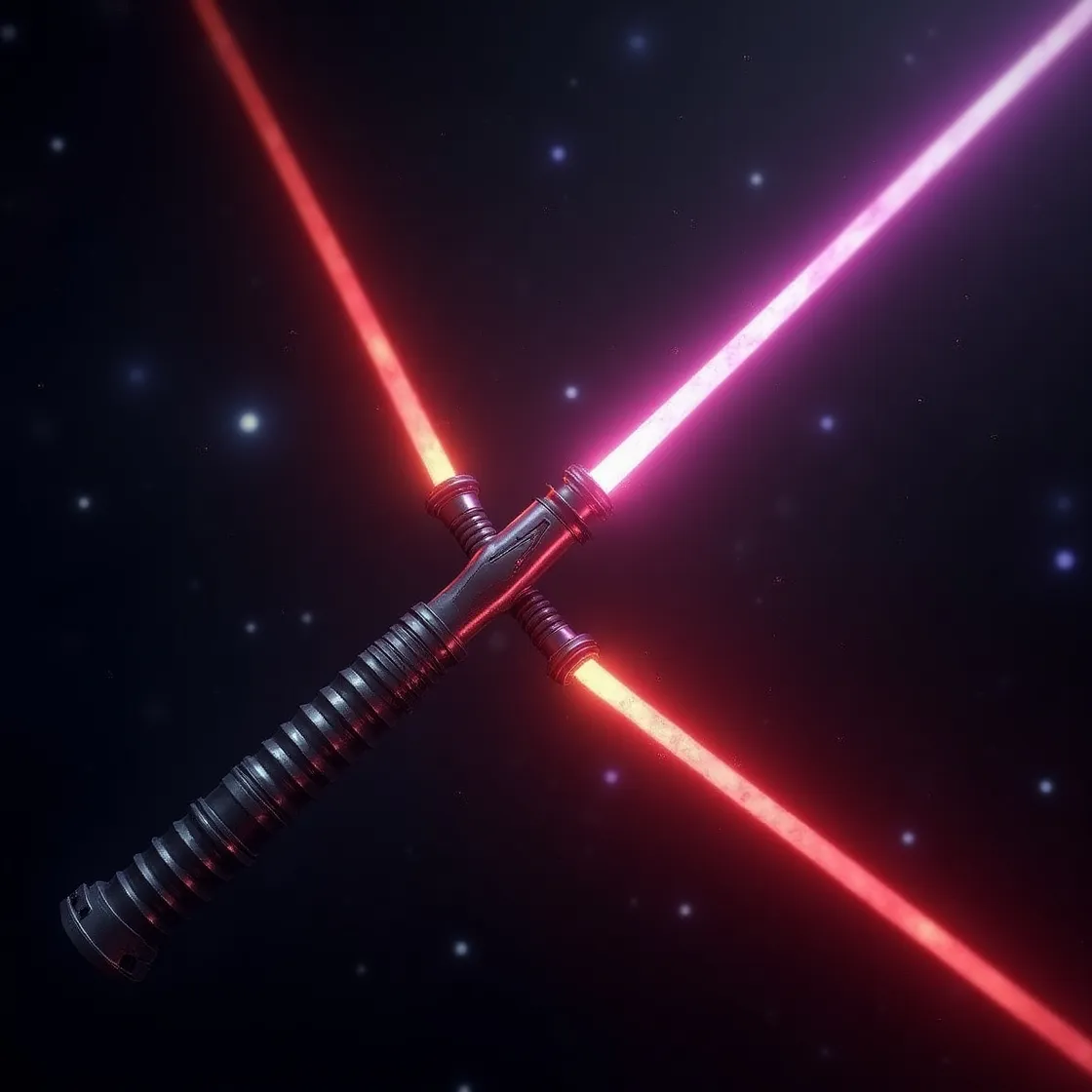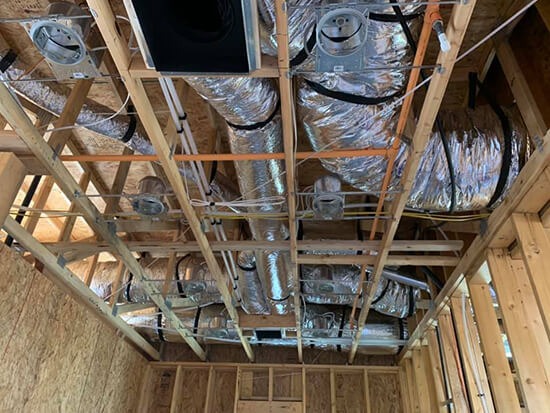The Double-Bladed Lightsaber: The Savage Elegance of the Galaxy’s Most Fearsome Weapon
In the world of Star Wars, the lightsaber is more than just a weapon—it’s an extension of the Force wielder’s identity. Among the various saber designs seen throughout the saga, few are as visually stunning, dangerous, and tactically intimidating as the double-bladed lightsaber.
Most fans were first introduced to this fierce design when Darth Maul ignited both ends of his saber in The Phantom Menace, creating one of the most jaw-dropping moments in Star Wars history. Since then, the double-bladed lightsaber has become a symbol of aggression, agility, and non-traditional combat philosophy.
This article dives deep into the origins, design, combat style, famous wielders, and legacy of the double-bladed lightsaber. Whether you’re building your own saber or exploring its lore-rich history, here’s everything you need to know about one of the galaxy’s most dangerous creations.
What Is a Double-Bladed Lightsaber?
A double-bladed lightsaber, also known as a saberstaff, is a variant of the standard lightsaber featuring two plasma blades that extend from opposite ends of a single hilt. Both blades are powered by separate Kyber crystals or a split power system, depending on the saber’s construction.
This design allows for incredibly fast and fluid strikes, devastating spinning attacks, and extended reach in battle. However, it requires a high degree of skill, agility, and control. One wrong move, and the user can just as easily harm themselves as their enemy.
Originally considered a Sith weapon, the double-bladed saber has since evolved into a powerful symbol for both dark and light side Force users willing to challenge traditional styles.
Anatomy of a Double-Bladed Lightsaber
The saberstaff is one of the more complex saber types in the galaxy. Here’s a breakdown of its components:
- Extended Hilt: Typically twice as long as a standard saber hilt to accommodate dual emitters.
- Dual Emitters: Positioned on either end of the hilt, each capable of producing an independent blade.
- Power Source: Can be a single high-output power cell or two separate cells.
- Kyber Crystals: Some double-bladed sabers contain one split Kyber crystal; others have two—one for each blade.
- Coupler: Some designs allow the hilt to be split into two separate single-bladed sabers. This modular feature became popular among Jedi and Sith alike.
- Control Mechanisms: Multiple ignition switches allow for selective blade activation—users can ignite one blade at a time or both simultaneously.
Advantages of the Double-Bladed Design
- Extended Reach: The saber staff can reach across wider distances, giving users an edge in multi-enemy confrontations.
- Rapid Spin Techniques: Allows for continuous motion and blinding-speed attacks.
- Unpredictability: Most opponents are trained against single-blade fighters. A double-bladed user often catches enemies off-guard.
- Blade Lock Capability: The length of the staff can be used defensively to lock and trap an opponent’s saber.
- Modular Combat: If designed with a split coupler, users can shift between dual-wielding and staff-based fighting.
But with all its benefits comes the trade-off—extreme difficulty in control. Mishandling a saberstaff can result in self-injury or loss of control in a duel.
Combat Styles Suited for Double-Bladed Lightsabers
Not all lightsaber forms are ideal for double-bladed weapons. Users typically rely on modified versions of existing forms or create hybrid techniques.
Best-Suited Forms:
- Form IV: Ataru
This highly acrobatic form emphasizes flips, spins, and kinetic momentum—perfect for saberstaff combat. Used by agile duelists like Darth Maul and Ahsoka Tano (when dual-wielding). - Form VI: Niman
A balanced and adaptive form that blends offense, defense, and Force techniques. Ideal for users who prioritize versatility over specialization. - Jar’Kai (Dual-Wielding)
While not a formal form, Jar’Kai is often used when the saberstaff can split into two separate sabers. Useful in chaotic or high-speed combat scenarios.
Advanced users may even develop personal styles, blending elements of staff combat, martial arts, and traditional lightsaber techniques.
Famous Wielders of Double-Bladed Lightsabers
Darth Maul (Portrayed by Ray Park, voiced by Sam Witwer)
The most iconic user of the double-bladed lightsaber. Built his saberstaff during his training under Darth Sidious. Used a red, dual-bladed hilt with fluid Ataru-based combat. Responsible for the deaths of Jedi Master Qui-Gon Jinn and countless others.
Maul’s saber was eventually split in half during his battle with Obi-Wan Kenobi. Later, he constructed a new variant, combining parts from his original with the Inquisitor’s hilt.
Number of Lightsabers: 2 (original saberstaff and later hybrid)
Color: Red
Savage Opress (Voiced by Clancy Brown)
Maul’s brother and fellow Zabrak warrior. Wielded a red double-bladed saber similar in design to his brother’s. Used brute strength and sheer aggression over finesse.
Number of Lightsabers: 1
Color: Red
The Grand Inquisitor (Portrayed by Rupert Friend, voiced by Jason Isaacs)
Used a spinning double-bladed saber with a circular emitter ring. This design allowed for hovering blade rotation and fast-paced attacks. Common among members of the Inquisitorius.
Number of Lightsabers: 1
Color: Red
Seventh Sister & Eighth Brother
Both Inquisitors utilized spinning double-bladed lightsabers with collapsible hilts. Designed for both combat and intimidation. The Eighth Brother’s saber could function as a helicopter-like glider, though highly unstable.
Number of Lightsabers: 1 each
Color: Red
Tanos and Jedi Temple Guards
Although Ahsoka primarily used two single sabers, several Jedi Temple Guards were seen wielding yellow double-bladed sabers, designed for defense and ceremonial protection.
Number of Lightsabers: 1 each
Color: Yellow
Double-Bladed Lightsabers in Jedi Lore
While often associated with the Sith, the saberstaff has also been used by Jedi—though more rarely.
Jedi generally viewed the double-bladed lightsaber as a dangerous and aggressive design, not aligned with traditional Jedi values of balance and control. However, in times of war or when facing multiple opponents, some Jedi chose the saberstaff for its practical advantages.
During the Old Republic era, many Jedi wielded saberstaffs, especially when facing hordes of Sith warriors or defending critical strongholds. In this era, combat efficiency often took precedence over elegance.
Building a Custom Double-Bladed Lightsaber
Fans today can build realistic, functional double-bladed sabers using modern saber-building tools and modular components.
Custom Features to Consider:
- Split Functionality: Ability to separate into two sabers via coupler.
- Blade Type: Neopixel (for advanced effects) or baselit (for durability).
- Hilt Design: Length, grip texture, emitter styles.
- Color Control: Some sabers allow different colors on each blade.
- Sound Profiles: Load dual-saber fonts or Maul-style audio.
- Ignition Effects: Sequential blade ignition or spinning animations.
- Motion Sensing: Smooth swing, flash-on-clash, and gesture control.
Many modern saber hilts are inspired by Darth Maul, the Inquisitors, or ancient Jedi from the High Republic era. Some fans even build hybrid sabers—mixing double-blade functionality with curved hilts or crossguard features.
Pros and Cons of the Double-Bladed Lightsaber
Pros:
- Ideal for crowd control and high-momentum combat
- Visually intimidating and iconic
- Can be modular and split into dual sabers
- Perfect for acrobatic or Force-enhanced fighting styles
Cons:
- Requires expert training to wield effectively
- Risk of self-injury during use
- Not ideal for tight spaces or confined battles
- Heavier and longer, which can reduce agility for some users
Legacy of the Double-Bladed Lightsaber in Star Wars
The double-bladed lightsaber has carved a unique and unforgettable place in the Star Wars universe. It’s a symbol of raw power, tactical innovation, and defiance against traditional forms. Whether in the hands of a Sith assassin or a renegade Jedi, the saberstaff represents a willingness to challenge convention.
From the blood-red blades of Darth Maul to the ceremonial yellow of the Jedi Temple Guards, the double-bladed saber tells stories of war, rebellion, and legacy. It’s more than just a weapon—it’s a statement.
Today, fans continue that legacy by building their own saberstaffs, developing new combat forms, and creating characters that honor both the light and dark sides of the Force. In cosplay, choreography, and storytelling, the double-bladed lightsaber remains one of the most thrilling and dynamic elements in Star Wars history.
When both blades ignite, you’re not just holding a weapon—you’re wielding a legend.





